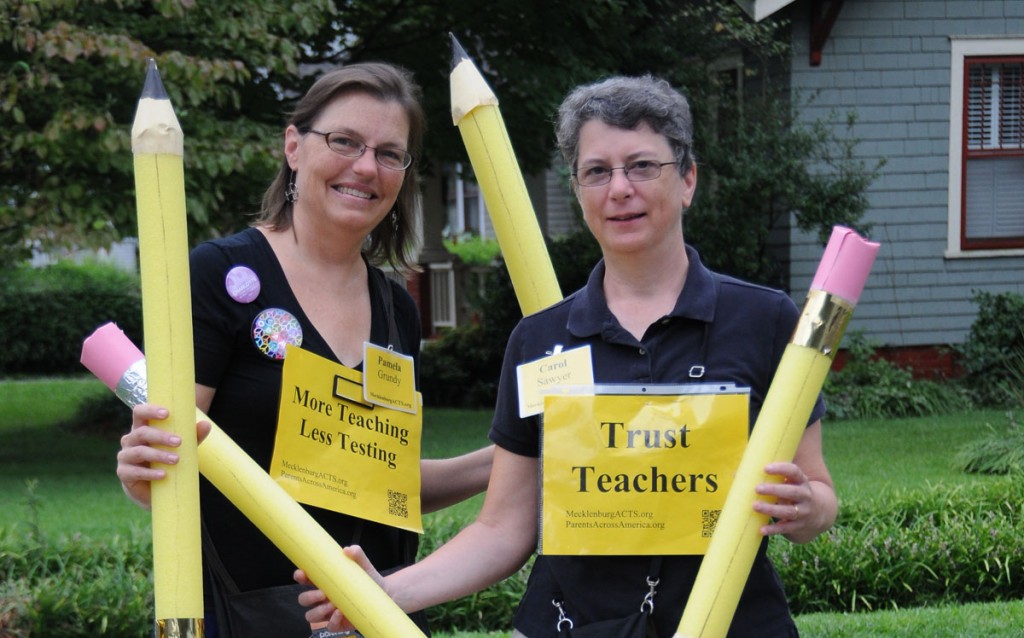Diane Ravitch’s headline said it all.
Two Moms Terrify DFER, Students First.
If someone had asked you to describe the pair of women standing in bemusement at the corner of First and Tryon on Tuesday afternoon, I doubt that “terrifying” would have come to mind. True, our pencils were quite large, but they were made from pool noodles. We did have signs, but they bore the apple-pie slogans of “Trust Teachers” and “More Teaching, Less Testing” – words that had gotten us smiles and high-fives everywhere else we went.
Still, for the second time in two days, the organizers of an education-related event at the Democratic National Convention had refused to let us in.
What on earth were they afraid of?
The first refusal, at a Students First showing of the controversial movie “Won’t Back Down,” had been a comedy of errors involving a former school board member, a delegate from Oregon, two security guards and several flights of stairs. This one, at the “Democrats for Education Reform Town Hall,” had greater clarity.
We’d registered weeks in advance and gotten e-mail confirmations, along with several enthusiastic updates as speakers were added to the program. But when we set up near the entrance and started handing out our flyers, consternation ensued.
In a moment unsettlingly resembling a Michael Moore movie, a fashionably clad spokeswoman emerged to interrogate us. They didn’t want any disturbances at the event, she said. We couldn’t unroll the signs inside our pencils (which would have been a challenge as we didn’t have signs inside our pencils). We assured her that we wouldn’t wave our signs around, and added for good measure that we would only speak during the audience question period (it was, after all, a “town hall”). She noted that there probably wouldn’t be time for audience questions.
In the end, though, despite our assurances and our confirmed registrations, they wouldn’t let us in. We were flabbergasted.
How much damage did they think two moms could do?
Of course, it doesn’t take much to topple a statue built on feet of clay. The main point our flyers made was that the “fixes” these groups are offering for public education – more testing, more charters, closing schools, a newfangled idea called the “parent trigger” – simply don’t work. They don’t make things better for the majority of kids. A lot of money has been spent on these “reforms,” a lot of money donated to political candidates and a lot of money made. But as time has passed, the downsides for students have become increasingly apparent.
And while our numbers might not have looked impressive, we weren’t alone in our critique. Judging from the reactions to our signs and pencils as we walked through town – from delegates, volunteers, police officers, parking lot attendants, mothers, kids and so on – a lot of folks out there agree with us about the damage that’s been done by policies that emphasize privatization, high-stakes testing and scapegoating of teachers. And then there’s cyberspace. Demonstrations of the past brought large numbers of people together in the same place. Today, part of the challenge is to frame an issue with the clarity it takes for social and other media to spread the word, and prod people to think.
So perhaps two moms with pencils are scarier than they look.
 Moms on the Loose. Be Very Afraid.
Moms on the Loose. Be Very Afraid.